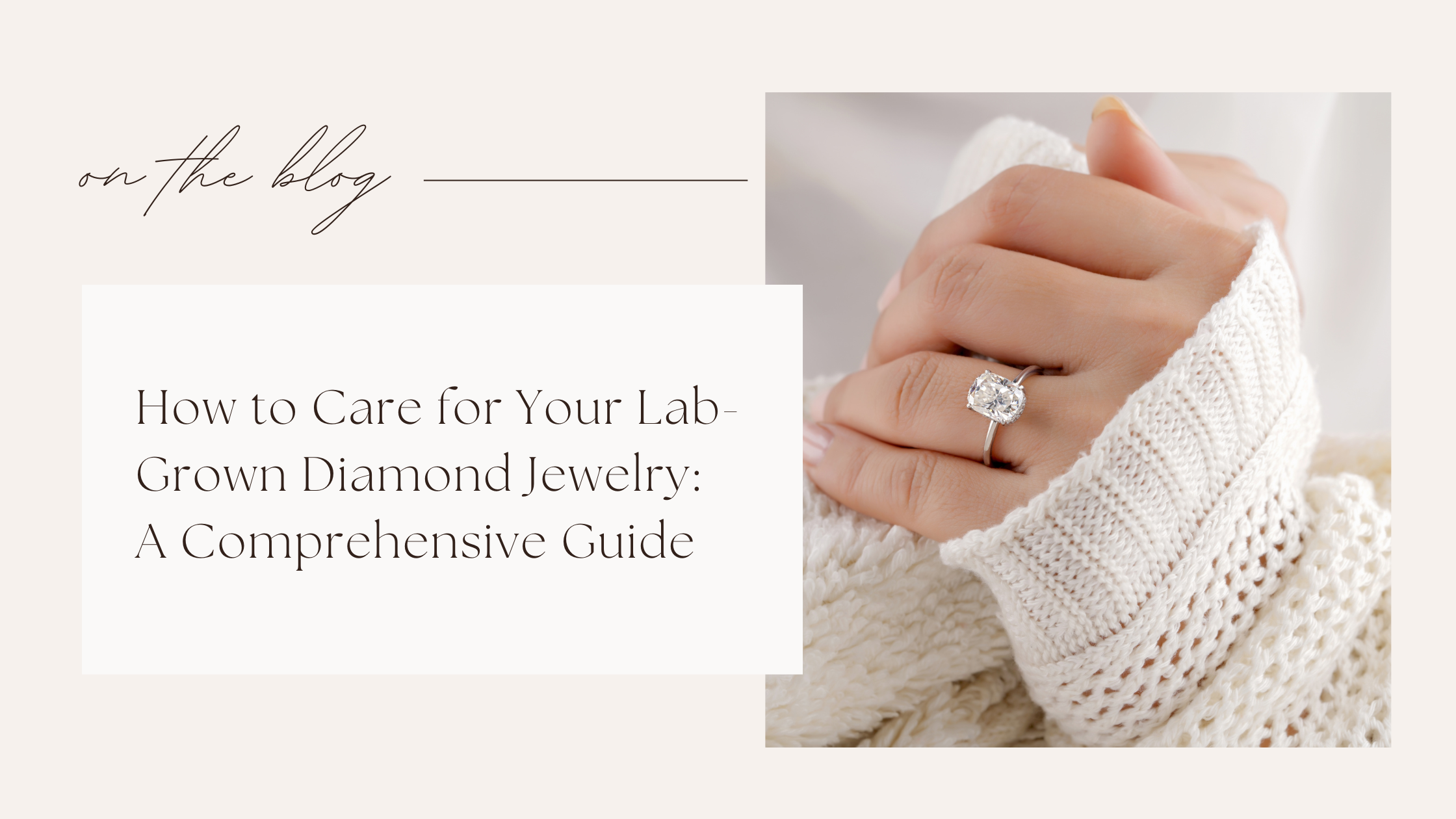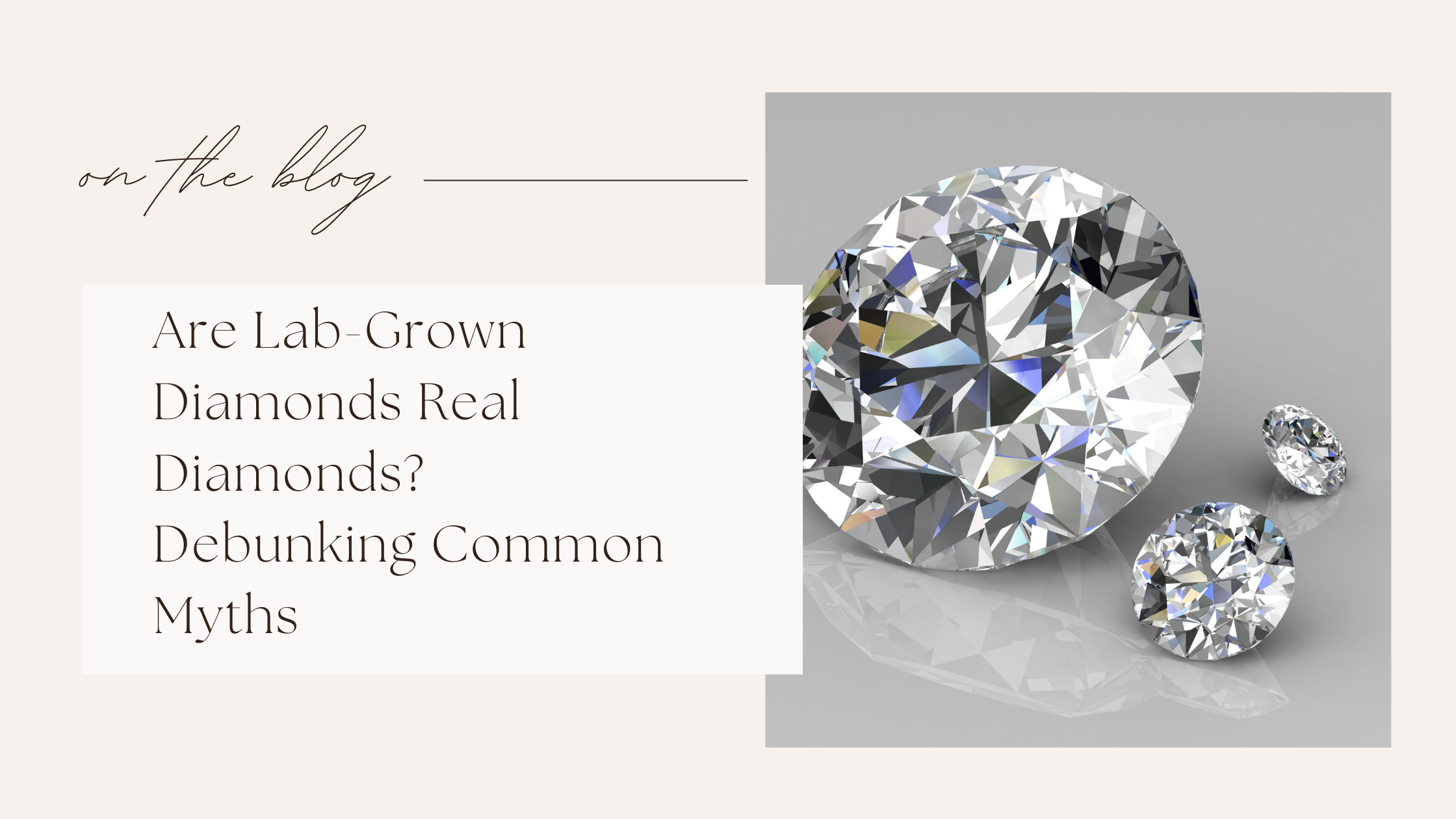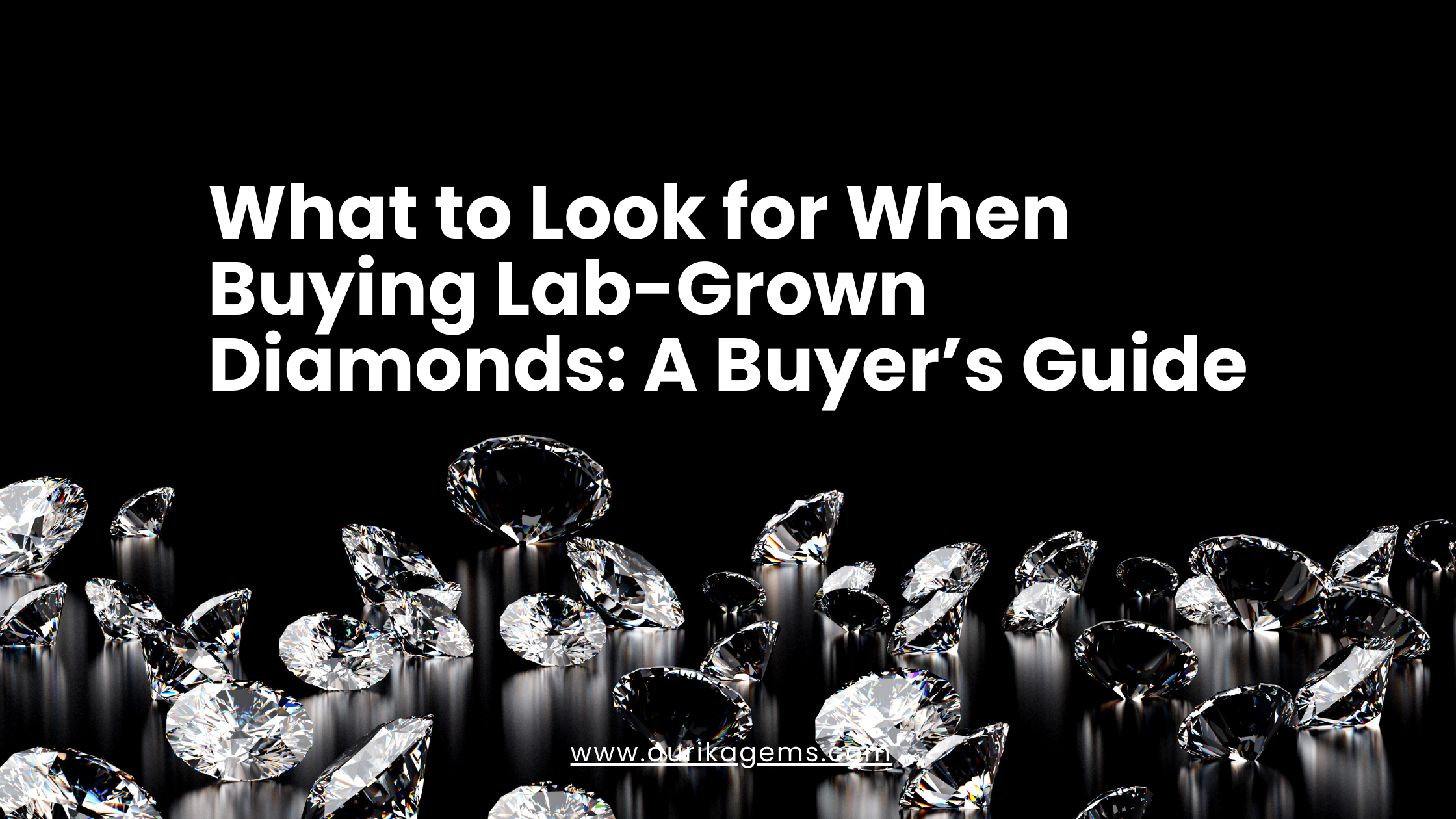
Lab-Grown Diamond Care Tips
Lab-grown diamonds have revolutionized the jewelry industry, offering a beautiful and sustainable alternative to natural diamonds. These gems are created in controlled environments, mimicking the natural process of diamond formation, and they boast the same physical and chemical properties as their mined counterparts. However, proper care and maintenance are crucial to ensure that your lab-grown diamond jewelry retains its brilliance and lasts for generations. This comprehensive guide provides detailed Lab-Grown Diamond Care Tips for caring of your lab-grown diamond jewelry.
Understanding Lab-Grown Diamonds
Before diving into the care tips, it's essential to understand what makes lab-grown diamonds special. Lab-grown diamonds are produced using advanced technology that replicates the natural conditions under which diamonds form. There are two primary methods for creating lab-grown diamonds:
- High Pressure High Temperature (HPHT): This method mimics the natural process of diamond formation by subjecting carbon to high pressure and temperature.
- Chemical Vapor Deposition (CVD): This technique involves breaking down carbon-rich gases into a diamond structure in a controlled environment.
Despite their synthetic origin, lab-grown diamonds possess the same physical characteristics as natural diamonds, including hardness and brilliance. Proper care ensures that these qualities remain intact.
Read more: Lab grown diamonds how are they made
Regular Cleaning
- Use Mild Cleaning Solutions
Lab-grown diamonds can accumulate dirt, oils, and dust over time, which can dull their sparkle. To keep your jewelry looking its best, regular cleaning is necessary. Start with a mild dish soap diluted in warm water. Avoid using harsh chemicals or abrasive cleaners, as these can damage the diamond or its setting.
How to Clean:
- Prepare a Cleaning Solution: Mix a few drops of mild dish soap with warm water in a bowl.
- Soak Your Jewelry: Place your lab-grown diamond jewelry in the solution and let it soak for about 15-20 minutes. This helps to loosen any dirt or grime.
- Gently Scrub: Use a soft toothbrush or a jeweler's brush to gently scrub the diamond and the setting. Pay special attention to the areas where dirt can accumulate, such as around the prongs or in the crevices.
- Rinse Thoroughly: Rinse the jewelry under lukewarm water to remove any soap residue.
- Dry Carefully: Use a lint-free cloth or a jewelry polishing cloth to dry the jewelry. Ensure it's completely dry before storing it.
- Professional Cleaning
While regular home cleaning is essential, periodic professional cleaning is also recommended. Jewelers have specialized equipment and solutions that can deeply clean your jewelry and restore its original shine. Schedule a professional cleaning at least once a year, or more frequently if your jewelry is exposed to heavy wear.
Avoiding Harsh Chemicals
- Keep Away from Cleaning Products
Lab-grown diamonds are durable, but harsh chemicals can affect the metal settings and other components of your jewelry. Avoid exposing your diamonds to bleach, ammonia, or other strong cleaning agents. These chemicals can weaken the metal or cause discoloration.
- Protect from Beauty Products
When applying beauty products such as lotions, hairsprays, or perfumes, it's best to do so before putting on your diamond jewelry. Apply these products first and allow them to dry completely before wearing your jewelry. This helps prevent residue buildup on the diamond and its setting.
Proper Storage
- Use Soft Storage Options
Proper storage is crucial to prevent damage to your lab-grown diamond jewelry. Store each piece in a soft cloth pouch or a lined jewelry box. This protects the jewelry from scratches and minimizes the risk of physical damage.
- Separate Jewelry Pieces
To prevent abrasion, store each piece of jewelry separately. Avoid placing multiple items in a single compartment, as they can rub against each other and cause scratches.
- Avoid Extreme Temperatures
Store your jewelry in a cool, dry place away from direct sunlight and extreme temperatures. Excessive heat or cold can affect the metal and may cause warping or damage to the setting.
Routine Inspections
- Check for Loose Stones
Regularly inspect your jewelry for any signs of damage or loose stones. Pay attention to the settings, especially if you notice any changes in how the diamond is held or if the diamond seems loose. Loose stones can easily fall out if not addressed promptly.
- Seek Professional Help
If you notice any issues, such as a loose setting or damaged metal, seek professional help from a jeweler. They can assess the problem and perform necessary repairs to ensure your jewelry remains in excellent condition.
Safe Handling
- Handle with Care
When handling your lab-grown diamond jewelry, do so with care. Avoid touching the diamond with your fingers, as oils and dirt from your skin can dull its shine. Instead, hold the jewelry by the band or setting.
- Remove During Activities
To prevent damage, remove your jewelry before engaging in strenuous activities or exposing it to harsh conditions. This includes exercise, swimming, or cleaning. These activities can subject your jewelry to chemicals, physical stress, or accidental impacts.
Special Considerations for Different Settings
- Prong Settings
Prong settings are popular for their ability to maximize a diamond's brilliance. However, they require regular checks to ensure the prongs are secure. If you notice any bending or shifting of the prongs, have them adjusted by a professional jeweler.
- Bezel Settings
Bezel settings encircle the diamond with a metal rim, providing extra protection. While they are generally more secure, it's still important to inspect them regularly for any signs of damage or loosening.
Read More: Lab-Grown Diamonds the future of ethical and sustainable jewelry
Handling Specific Types of Jewelry
- Engagement Rings
Engagement rings often have intricate designs and settings that require special attention. Clean and inspect your engagement ring regularly, and ensure it is properly sized to avoid accidental loss.
- Earrings and Bracelets
Earrings and bracelets can be exposed to more wear and tear compared to other jewelry types. Regular cleaning and inspections are essential to maintain their appearance and ensure they remain secure.
Dealing with Specific Issues
- Scratches
If your lab-grown diamond or its setting develops scratches, consult with a professional jeweler. They can assess the damage and provide options for polishing or repairing the affected areas.
- Metal Tarnishing
Certain metals, such as silver or white gold, can tarnish over time. Use a specialized polishing cloth to gently clean tarnished areas, and consider having the piece professionally cleaned if the tarnish persists.
Conclusion
Lab-grown diamond jewelry offers the same beauty and durability as natural diamonds, with the added benefit of being environmentally friendly. Proper care and maintenance are key to ensuring that your lab-grown diamonds continue to sparkle and shine for years to come. By following these Lab-Grown Diamond Care Tips—regular cleaning, avoiding harsh chemicals, proper storage, routine inspections, and safe handling—you can keep your jewelry looking as stunning as the day you received it.
Investing in high-quality lab-grown diamond jewelry is not only a choice for elegance but also a commitment to sustainability. With the right care, your lab-grown diamonds will remain a cherished part of your collection, reflecting both their timeless beauty and your commitment to ethical choices.


